We decided to drive to Spain for the day from Banyuls sur Mer, taking the D914 coast road to the Franco-Spanish border. From there, well… we were intent on having a pintxos lunch so, almost any town or village in Spain would do. We’d follow the N260 in Spain and make our mind up as to the final destination en route. This trip was as much about the coast road as the pintxos.
The coast road to the border was everything it promised to be. It is a slow route because of it’s many curves and hairpin bends but, except for a handful of motorbikes, it was surprisingly quiet and offered exceptional views along the Catalan coast. The route took us through Cerbere and then up through a series of interesting rock formations to the Belitres Pass and into Spain.

The border is marked on the French side of the Pass by a long abandoned customs post which is now almost completely covered in graffiti and; on the Spanish side of the Pass by the Retirada Memorial, erected in 2009.
The Retirada (the Memorial del Exilio del Paso de Belitres to use it’s correct name) is a pictorial representation by Columbian artist Manuel Moros of the suffering of hundreds of thousands of republican refugees fleeing Spain for France as General Franco’s armies descended on Barcelona towards the end of the Spanish Civil War. And it didn’t end there; a year later, in 1940, this same Pass was used by refugees crossing the other way, from France to Spain, while fleeing from Nazi Germany. I suspect a fair few of those who left Spain in 1939 were amongst those who were compelled to return in 1940. Talk about being caught between a rock and a hard place. Whatever, the photographs on the memorial capture the anguish and despair of the refugees. It’s a sobering memorial.
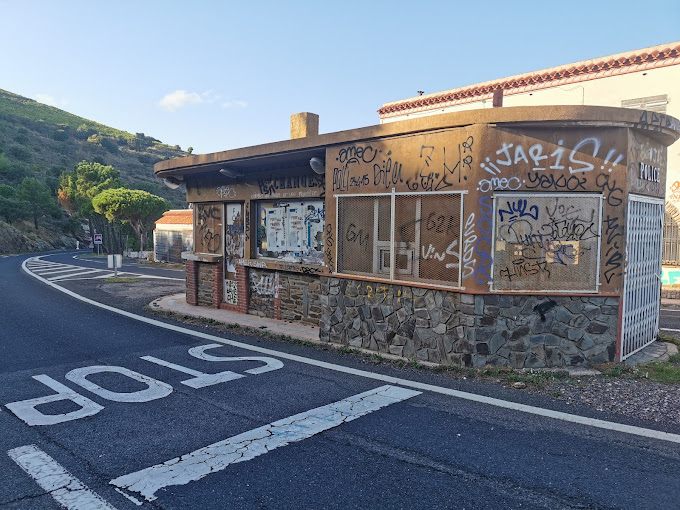
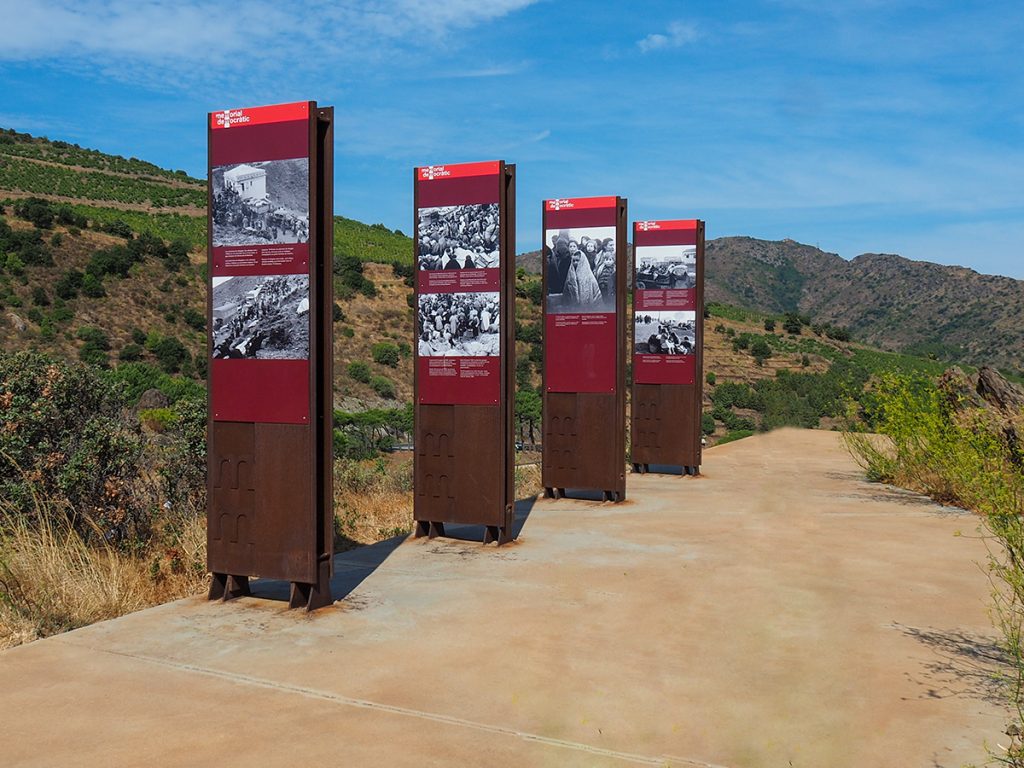
Once across the border and into Spain the road became the N260. This led us down through Portbou and then two other little fishing villages, Colera and Llanca.
Don’t ask me how it happened but, we soon found ourselves parked up in a place called Empuriabrava. Don’t go there! Reclaimed from swampland by some German entrepreneurs during the late 1960’s, Empuriabrava is a purpose built tourist resort of some 8,000 people (rising to an incredible 80,000 in the summer months). It is built around what I am advised is Europe’s largest residential marina, with some 40 kilometres of canals and more than 5,000 boat moorings. “Naff” is possibly the word that best describes the place. There is nothing about it that is remotely Spanish, let alone Catalonian, and from what little we saw (we couldn’t get out of there quick enough) it appeared to be populated largely by Russians. Vanya likened the place to an ill thought out and awful imitation of Port Grimaud. I thought she was being kind.

And so it was that we arrived in Roses. In a facebook entry on the day we arrived, I described Roses as being to Spanish beach resorts what Waitrose is to supermarkets (i.e tasty) but, looking back, any Spanish beach resort with any authenticity about it would prove tasty compared to Empuriabrava … but that shouldn’t detract from Roses.
In common with most towns and villages on the Costa Brava, Roses was a fishing town. It still has the largest fishing fleet on the Costa Brava but is now unashamedly a tourist town and probably one of the most popular tourist destinations on the Costa Brava. What sets it apart from so many other places on the Costas and what I like about the place is that it is not in the least tacky. The words fashionable and chic spring to mind (but, we are out of season). Moreover, it sits on the northern tip of Roses Gulf and is the only beach resort on the Costa Brava that faces west (which, if nothing else, will make for some great sunsets).
We parked the Van in the south of the town on a wide boulevard in the modern residential area of Santa Margarida and then, with the wide sandy beach and calm turquoise sea to our right, we strolled along the promenade towards the town centre.
Hotels, restaurants, cafe-bars and sculptures line the promenade all the way to the old fishing port. At it’s centre there is little left of the original village; just more hotels and restaurants, large apartment blocks, shops and boutiques and the odd monument and; on Sunday mornings a farmers market with 200+ stalls. There’s no doubt about it; Roses’s focus is towards it’s high quality blue star beaches and there are plenty of them.

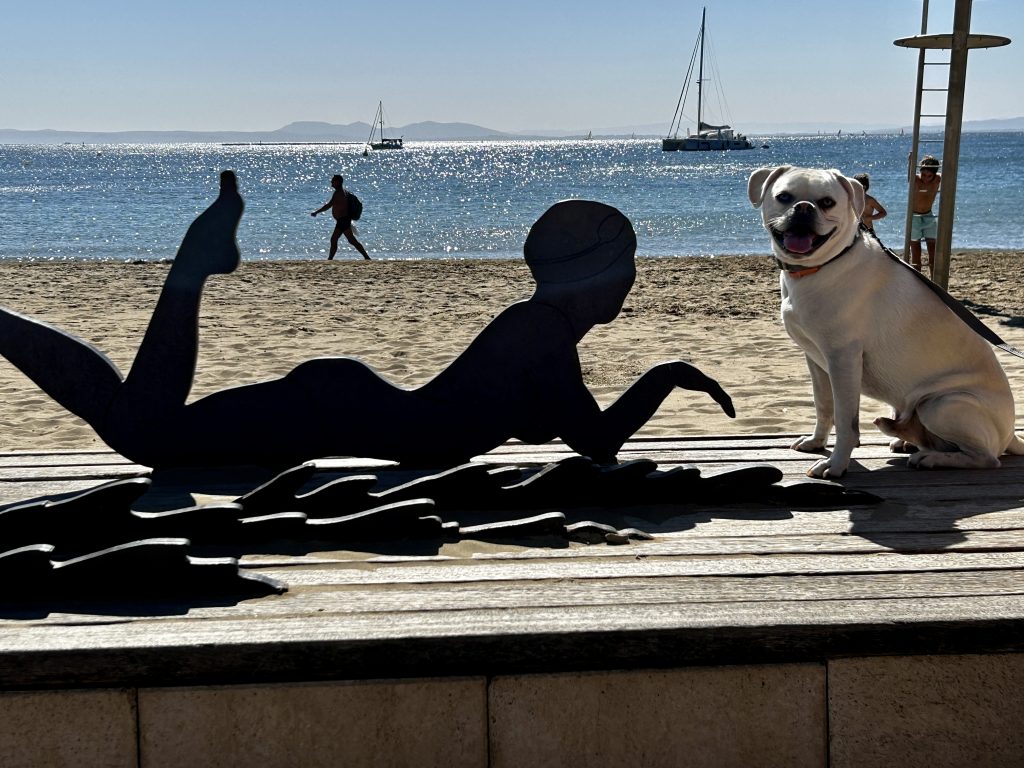
Those nearest the town centre (the Platja Nova, the Rastrell and the Salatar) are wide family friendly beaches with fine sand and clear shallow waters and they are very popular during the high season; as is the beach just to the north of the harbour (Platja La Punta). Beyond that and accessible by car and local transport are the smaller, quieter but no less welcoming beaches of Platja Palangres, the Canyelles Petites and the Canyelles Grosses (also known as Platja Almadrava). They too offer golden sands and shallow waters and they tend to be frequented by local families in the summer. Further north, some 7 kilometres from Roses and on the edge of Cap de Creus National Park, is Montjoi Creek (where the world famous triple Michelin Star restaurant ‘El Bulli’ used to be located), Joncols Creek and Cala del Canadel. The sand on these particular beaches is darker and mixed with flat stones but the water is clearer still. Finally, there are numerous other small secluded beaches deeper inside the National Park (Cala Calitjas Creek and Cala Rostella being two of the larger better known ones) but these are stony and rocky and not so accessible and the water at Cala Rostella is considerably deeper. To reach them they require a bit of walking (unless you access them from the sea) and they tend to be the preserve of divers and nudists (or so I’m told).

Beach holidays don’t hold the same allure to Vanya and I as they used to (we can’t take the heat) but, going forward, I could be tempted to use Roses as a base from which to visit some of the surrounding countryside and especially the coastline although, it would have to be out of season. September and/or October would be as good a time as any. I think too that I could be tempted to charter a boat to better explore the coastline. Now there’s a thought.
After a short wander around the town, we set off back along the promenade to the Van, stopping at a beachfront restaurant on the way for pinxtos and a beer.
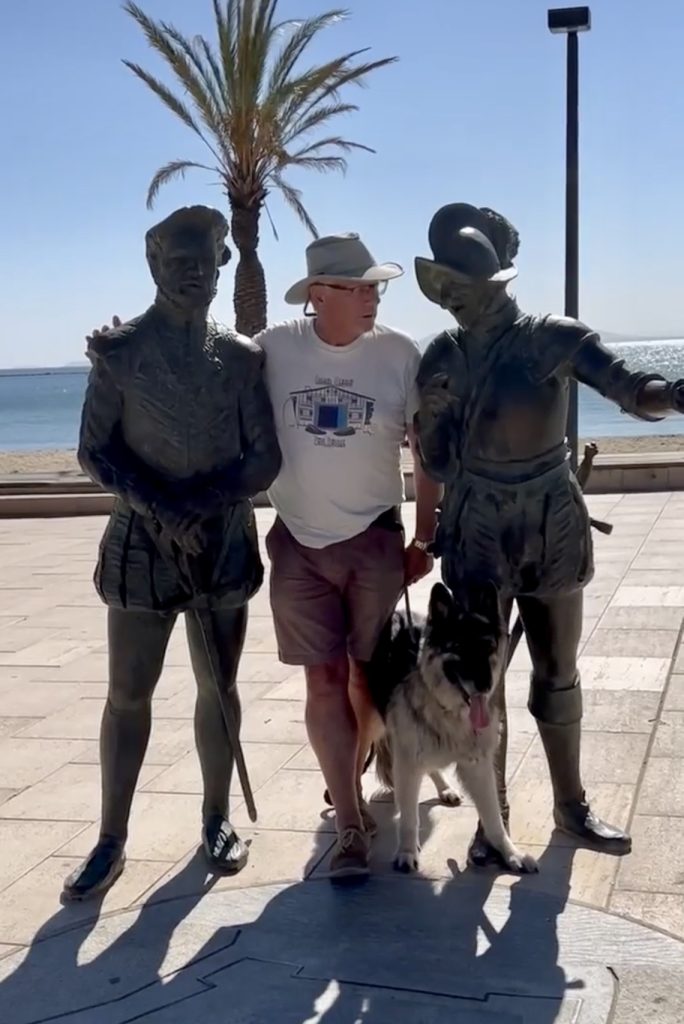

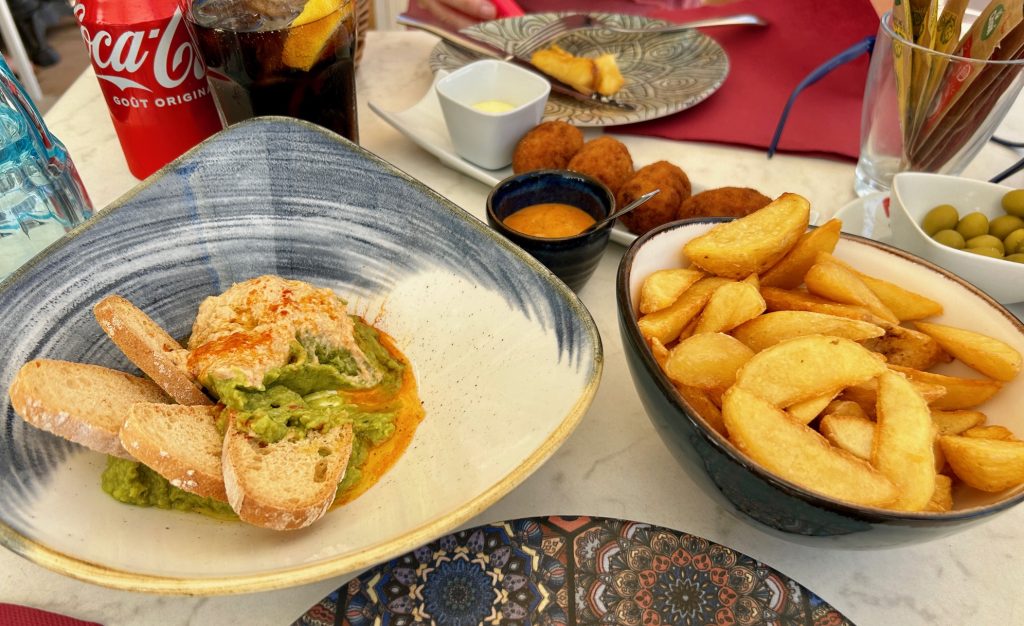

Oh. I mentioned the restaurant, El Bulli. It was owned by the Barcelona chef Ferran Adria and, until it’s closure in 2011, was one of the most famous restaurants in the world, holding 3 Michelin Stars from 1997 and being voted ‘Best Restaurant in the World’ 5 times in a row by Restaurant Magazine. Not once did El Bulli make a profit in the 27 years Adria was Head Chef but this is perhaps not surprising given they employed 40 chefs and had just 50 covers. It seems Adria’s focus was (is?) primarily towards avant-garde cooking; pushing boundaries and; creating new dishes with the whole menu being completely changed every year. Now that would have been a restaurant to visit.
We’ll return to Roses but for now, it’s back to Banyuls sur Mer and then north to the UK although; we still have a few days before having to catch our train back to Folkestone. It’s booked for Sunday 8 October.

